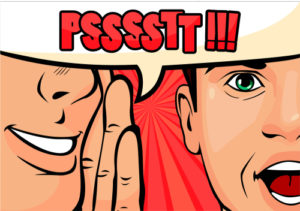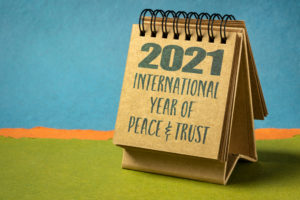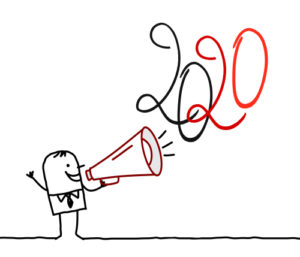by Beth Levine | Apr 14, 2021 | preparing for a presentation, public speaking
 Have you ever wished your upcoming presentation would just create itself? I think we all have; hence, the almost inevitable procrastination and dread. Developing a presentation can be challenging, time-consuming, and just plain overwhelming. You’re not sure where to begin, how to narrow your focus, or if you’re doing it “right.”
Have you ever wished your upcoming presentation would just create itself? I think we all have; hence, the almost inevitable procrastination and dread. Developing a presentation can be challenging, time-consuming, and just plain overwhelming. You’re not sure where to begin, how to narrow your focus, or if you’re doing it “right.”
Well, your wish has pretty much been granted. SmartMouth’s SpeechBuilder is a free online tool you can use anytime. SpeechBuilder is a fill-in-the-blanks solution for outlining or detailing your presentations. It prompts you to create a presentation that flows well for you and your audience. In the few minutes it takes to complete, you’ll get the peace of mind and confidence that comes with knowing you’re well-prepared.
It’s up to you how thorough or sketchy you want to be when you fill in the blanks. Once you’ve completed the SpeechBuilder form, you have several options: you can email it to yourself or others, you can view it in outline form, and you can duplicate it if you need to adapt it for a different audience or occasion. SpeechBuilder will automatically save your entries so you can come back and reference or edit your speeches and presentations anytime.
Protip: Use SpeechBuilder first, and then create your slide deck second. It won’t create the deck for you, but it will generate the order and priority points for you.
For a pocket presentation pal that’s at your fingertips anytime, try the SmartMouth Public Speaking Toolkit, our mobile app in the iTunes and Google Play stores. Same tool, but with more tips, and in your pocket.
by Beth Levine | Mar 22, 2021 | preparing for a presentation, public speaking
 Here are some fun facts about communication that might surprise (or horrify) you:
Here are some fun facts about communication that might surprise (or horrify) you:
All stereotypes aside, men and women speak approximately the same number of words per day – around 10,000, give or take a few.
Many of us spend 70 to 80% of our waking hours in some form of communication.
Of our daily communication time, we spend about 9% writing, 16% reading, 30% speaking, and 45% listening (Yikes!).
91% of people in the workplace report daydreaming during meetings. 73% do other work, and another 39% sleep. (Obviously very few are listening!)
The average person checks their email 36 times per hour. Yet it takes 16 minutes to refocus after opening email.
We spend approximately 15 million person hours per day viewing presentations in the U.S. alone.
These data points come from a variety of (reliable) sources and all point to one thing – communication is constant. And critical. Per the SmartMouth motto, communication is the currency of success … we cannot and do not succeed alone, we have to communicate in order to get things done and achieve goals. The above list of fun facts simply reminds us to make it count!
by Beth Levine | Feb 20, 2021 | preparing for a presentation, public speaking
 I’m going out on a limb here and speculating that when you were a kid, you never said:
I’m going out on a limb here and speculating that when you were a kid, you never said:
“When I grow up, I’m going to copy my boss in everything he/she does.”
“When I grow up, being mediocre will be good enough for me.”
“When I grow up, I’m not going to push myself or change anything.”
If, indeed, you did say any of these things, read no further. This article is not for you.
If, however, I’m right and you never said any of these things, then let’s talk.
As kids, we see our best selves in the future. Dreaming big comes with the territory of being young, idealistic, and optimistic. To wit, all the little kids who believe they’ll be a professional athlete, a movie star, or just plain rich and famous … despite the odds.
So, now you’re a grown-up, a professional, and your career matters to you. You’re ambitious, and you have your eye on something … big, next, consequential. Therefore, making a good impression and presenting yourself confidently and competently are important.
In terms of how you present yourself, in person and online, are you your best self now? Do you show energy and passion? Are your ideas articulated in a crisp, concise, impactful way? Have you adapted your delivery style to the new frontier – and the relatively small square allotted to you – on Zoom/WebEx/Teams/BlueJeans or whatever platform you’re using?
Here are 3 thoughts for you, so that you can make your younger self proud:
- Step it up, and step out. Yes, the world has changed, how we meet with one another has changed, and so it’s time to up your game! Even if you’re someone who “owns the room” during in-person meetings and presentations, you may not be owning your little square on-screen. Try some new things, and make yourself a little uncomfortable so that you stand out. Check out this video for some virtual presenting tips. The last thing you want to do is the bare minimum, or what everyone else is doing, online. Figure out your thing(s) for doing it differently and well!
- Give time back to your audience. We’re among friends, so let’s admit it: Sitting through sessions online, whether they’re casual meetings or more formal presentations, is tedious and puts everyone’s attention spans to the ultimate test. While it has been my hue and cry for a very long time, #brevity has been upgraded from urgent to being a full-blown emergency. Be brief, concise, to the point, even shorter than the occasion calls for so that you make your point, you’re memorable and you’re invited back. There’s nothing quite like giving time back to your audience. Trust me, if they want to hear more from you, they’ll let you know. Leave ‘em hungry!
- Add new tricks to your bag. Based on the types of meetings you lead or participate in, find interactive software tools you can incorporate into your online sessions. Does this force you to learn and try something new, even though you might encounter a glitch or two when you initially deploy it? Yup. (And does it potentially involve a new account login somewhere? Yup.) But the alternative is same-old same-old, mediocrity, and dread on the audience’s part. Your audience will love and learn from the interaction, and you will hold onto their itty bitty slivers of attention by using new tricks!
Making a good impression and engaging audiences is more challenging online, there’s no question about that. The good news is, we’re all pioneering this new frontier together and so the opportunities to try new things and stand out from our peers are wide open. Bottom line: You can keep the blinders on and wait out the pandemic until you return to in-person meetings (that is, if we return to those). Or you can seize the moment, pony up to make some changes, and differentiate yourself.
I would venture to say the seizing the moment would make your younger self really proud.
by Beth Levine | Jan 28, 2021 | Just Mouthing Off, preparing for a presentation, public speaking
 And now 2021 looms ahead with a lot of anticipation. Namely, we all are wondering … is the return to normal coming soon?
And now 2021 looms ahead with a lot of anticipation. Namely, we all are wondering … is the return to normal coming soon?
No one can say for sure. Workplaces have different policies and schedules for returning to the office … or not. Schools and professional sports teams have a plan … and a backup plan. Small businesses, hanging by a thread after all these months, are crossing their fingers and waiting … and waiting.
Still, no one can say for sure. And even if someone did say for sure, would you believe them? Ouch. It is for that reason, I assume (I haven’t tried to get confirmation), that President Biden’s first order of business is rebuilding trust.
Rebuilding trust is largely a communication task. It requires three main ingredients:
Transparency. True transparency is being honest and forthright with information, of course, but even more so, with emotion. Sharing the emotional piece – e.g. “we’re frustrated with the pace”; “we were disappointed in the results”; “we are overjoyed to learn that …” – humanizes the speaker and the organization. It strips away the robotic report-speak or corporate-speak that’s hard for audiences to relate to, and replaces those with humanity and feeling that truly reaches people.
Action. Words and actions need to be in lockstep with each another. One without the other is hollow. Actions require words to build awareness, and words require actions to build credibility. Awareness and credibility together build trust.
Patience and Persistence. Trust is earned over time. There’s no finger-snapping to make it happen faster. People need to get accustomed to the transparency and the follow-through on the action in order to even begin to trust. So, in building or rebuilding trust, an organization must be patient and persistent. There are no shortcuts.
Corporations, nonprofits, and governments all are susceptible to lapses in, or loss of, trust, and may be in the position of rebuilding it. If that’s the case, be aware that there’s no way around these three ingredients. The best of all possible circumstances, though, is never losing trust, and that only happens to organizations whose communications are transparent and who consistently follow through with the corresponding action.
Here’s to 2021 and a rebuilding of trust!
by Beth Levine | Oct 22, 2020 | preparing for a presentation, public speaking
 Team meetings? All hands gatherings? Still looking to impress your superiors? Is it even possible to stand out while working and attending these events remotely?
Team meetings? All hands gatherings? Still looking to impress your superiors? Is it even possible to stand out while working and attending these events remotely?
You’re at home. The dog barks, the doorbell rings, there are all kinds of disruptions. The good news is: the playing field is level, everyone’s in the same boat these days.
The bad news is: your ambition hasn’t lost momentum but it feels like opportunities to be noticed have. You’re glad you still have a job, but what about that promotion? Has it evaporated with the likes of break rooms and packed elevators?
How do you stand out and impress when you’re … a face … in a box … on a screen?
Here are four quick-hit tips for your virtual success:
Be quiet. Yup, this is counterintuitive, but in large group calls, unless you have something super substantive to offer, keep quiet. Don’t speak up to just make your voice heard. It’s too obvious, and that works against you.
Be on point. If you do have something substantive to offer, be on point. Make sure your substance is directly relevant to the topic or purpose of the call (this is good way to check yourself before you speak!). And if you surface a problem, be sure to also have a solution!
Give time back. In smaller meetings, when you need direction or approvals from the people above you, offer to end the meeting once the mission has been satisfied. Your superiors will be grateful if you give time back to them, rather than filling the time simply because it was on the calendar.
Look professional. Okay, here comes the old-school advice: look as you would if you were in the office … from the waist up at least. Keep yourself and your background as crisp and clean as you possibly can. Nonverbal messaging still matters.
In these strange and uncertain times, you might need to play a long game in addition to playing your cards well onscreen. Patience will help you and, of course, the quality of your work will still speak for itself. In addition to all of the above, being mindful of management’s experience too – screen fatigue for sure, managing and motivating from a distance, dealing with lots of unknowns – will be a show of empathy and maturity that also singles you out.
by Beth Levine | Sep 23, 2020 | preparing for a presentation, public speaking
 Let’s for a moment throw away SmartMouth Communications’s aspirational motto, “communication is the currency of success.” Instead, let’s look at what 2020 is teaching us about the more fundamental importance of communication and consider rephrasing it to be “communication is the currency of life.”
Let’s for a moment throw away SmartMouth Communications’s aspirational motto, “communication is the currency of success.” Instead, let’s look at what 2020 is teaching us about the more fundamental importance of communication and consider rephrasing it to be “communication is the currency of life.”
2020 has been quite a year so far (and we still have one more quarter to go!). Due to the unusual confluence of events this year, and under the klieg lights of competing crises, communication as a practice has revealed itself to be more vital and more challenging than ever.
Leaving politics aside, I think we all can agree we’ve seen a surge in the delivery and consumption of communication from multiple angles. There are increasingly more ways in which communication comes to the fore, but in 2020 in particular, there’s also been urgency. Communication is fueling our opinions and actions in an almost exaggerated, but also necessary, way this year.
Let’s take a closer look …
Pandemic. Public health is as much about communication as it is about medicine or science. We are helpless, and potentially in harm’s way, in the face of any outbreak, let alone a global pandemic, which makes communication absolutely essential. At the end of the day, we all make our own decisions and judgment calls about what we as individuals will do to take care of ourselves, but before we can do that, we depend on communication from experts and leaders.
Protests. Protests are, by definition, a way for people and their voices to join together in collective communication. This form of group communication is meant to create impact and to have influence – louder and more powerfully than any one voice can achieve. Whatever we may think of protests in 2020, they have made themselves a prominent element of our society’s soundtrack this year.
Storms and Fires. Public safety, like public health, is as much about communication as it is about containment and rescue efforts. When it comes to natural disasters, communication is a matter of life and death. Public safety officials, leaders, and citizens alike rely on communication to save lives, homes, and businesses. Warnings, advisories, offers of help and shelter are all critical communications.
Campaigns. Campaigns are notorious noisemakers. However, campaigns are an essential way of communicating the choices we have in a democracy. This year, because we face so many dire issues – health, safety, economic, to name just a few – campaign communications are layered on top of and in the midst of constant, competing, and compelling crises across the country. Political leanings aside, I think we all can agree that campaign communications this year are more intense and more attention-grabbing, because they are more co-mingled with day-to-day events/crises than usual.
It’s been one heck of a year so far and, from where I sit, it’s been fascinating. Not only is there a tidal wave of communication coming our way almost all the time, but we have the need and the time to consume it all. It’s a lot to wade through, there’s no doubt, but consider the alternative: without communication, we’d face multiple risks and threats right now without knowing it and without being able to protect ourselves and our families. Perhaps communication actually is the currency of life.
 Have you ever wished your upcoming presentation would just create itself? I think we all have; hence, the almost inevitable procrastination and dread. Developing a presentation can be challenging, time-consuming, and just plain overwhelming. You’re not sure where to begin, how to narrow your focus, or if you’re doing it “right.”
Have you ever wished your upcoming presentation would just create itself? I think we all have; hence, the almost inevitable procrastination and dread. Developing a presentation can be challenging, time-consuming, and just plain overwhelming. You’re not sure where to begin, how to narrow your focus, or if you’re doing it “right.”
 Here are some fun facts about communication that might surprise (or horrify) you:
Here are some fun facts about communication that might surprise (or horrify) you: I’m going out on a limb here and speculating that when you were a kid, you never said:
I’m going out on a limb here and speculating that when you were a kid, you never said: And now 2021 looms ahead with a lot of anticipation. Namely, we all are wondering … is the return to normal coming soon?
And now 2021 looms ahead with a lot of anticipation. Namely, we all are wondering … is the return to normal coming soon? Team meetings? All hands gatherings? Still looking to impress your superiors? Is it even possible to stand out while working and attending these events remotely?
Team meetings? All hands gatherings? Still looking to impress your superiors? Is it even possible to stand out while working and attending these events remotely?  Let’s for a moment throw away SmartMouth Communications’s aspirational motto, “communication is the currency of success.” Instead, let’s look at what 2020 is teaching us about the more fundamental importance of communication and consider rephrasing it to be “communication is the currency of life.”
Let’s for a moment throw away SmartMouth Communications’s aspirational motto, “communication is the currency of success.” Instead, let’s look at what 2020 is teaching us about the more fundamental importance of communication and consider rephrasing it to be “communication is the currency of life.”

